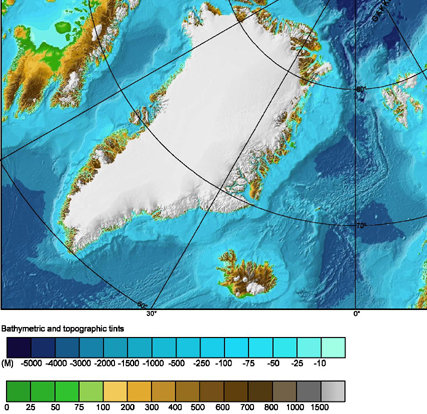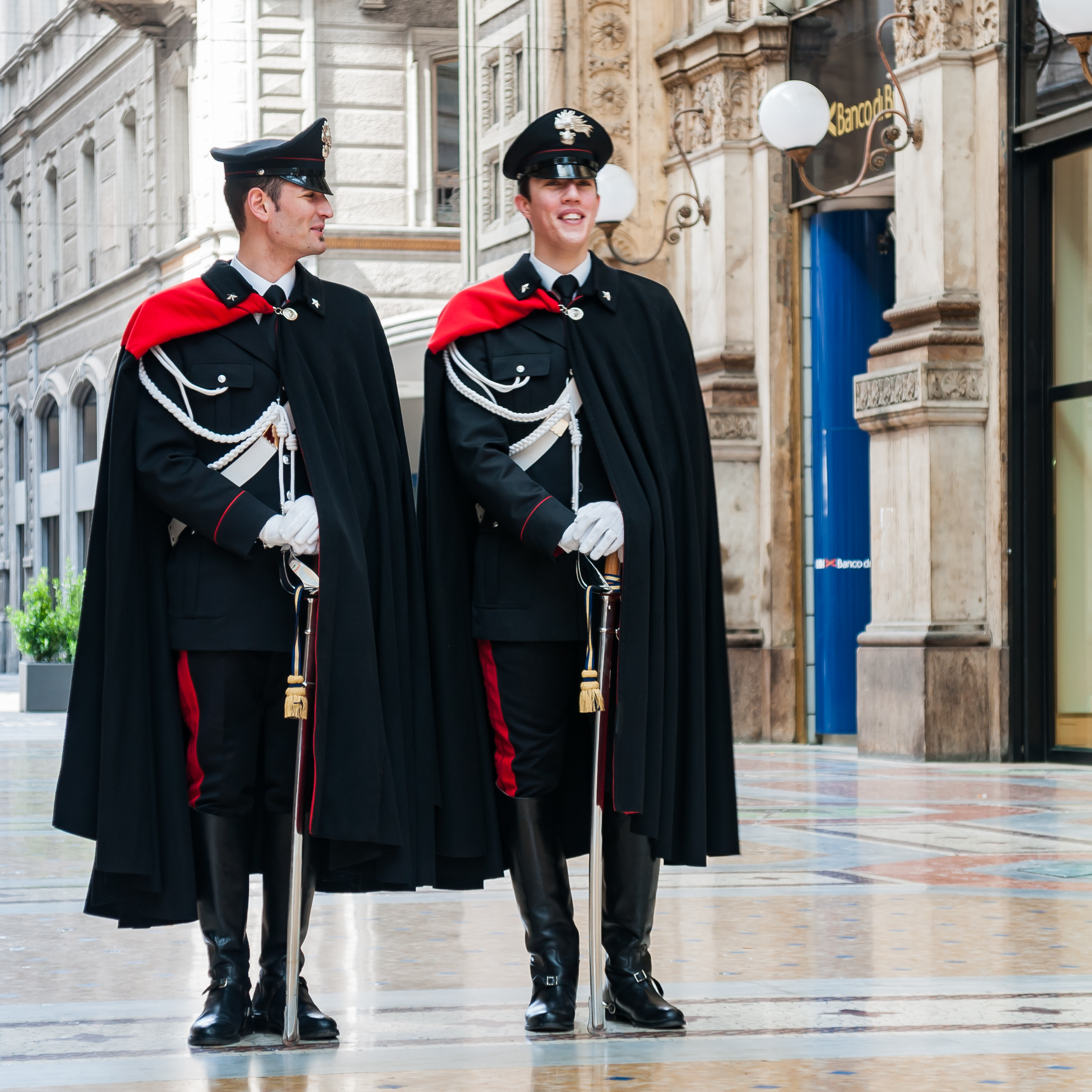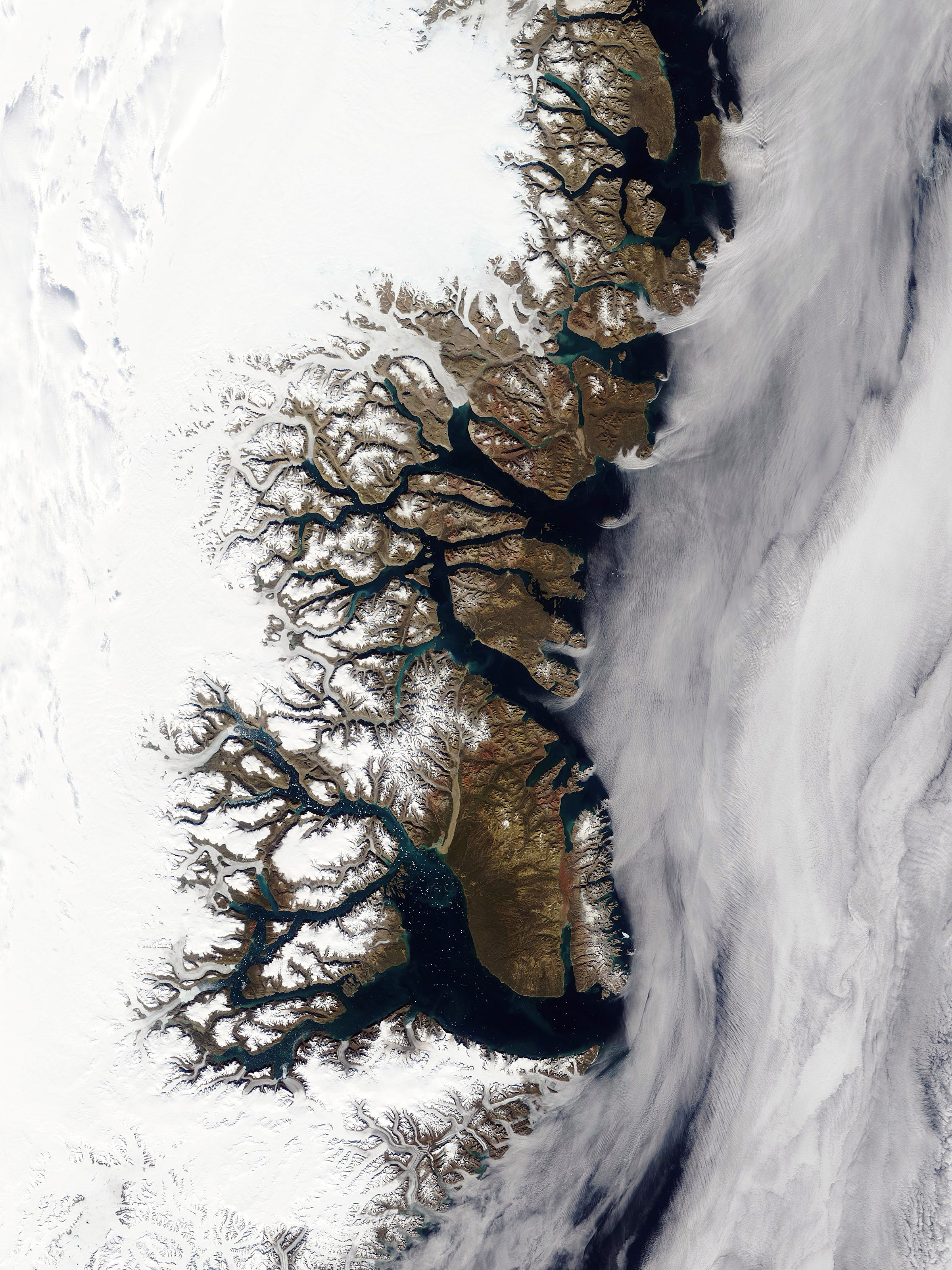|
Foster Bay
Foster Bay ( da, Foster Bugt) is a large bay of the Greenland Sea in King Christian X Land, Eastern Greenland. Administratively it belongs to the NE Greenland National Park area. Geography The bay lies north-east of Geographical Society Island. The Kaiser Franz Joseph Fjord has its mouth in the bay, between Cape Mackenzie at the eastern end of Geographical Society Island and Cape Franklin, the southern end of the mainland's Gauss Peninsula; Bantekoe Island lies in the bay off the mouth of the fjord.''Prostar Sailing Directions 2005 Greenland and Iceland Enroute'', p. 120 The eastern end of the Gauss Peninsula Gauss Peninsula ( da, Gauss Halvø) is a peninsula in eastern Greenland. Administratively this peninsula is part of the Northeast Greenland National Park zone. History The second German North Polar Expedition 1869–70 originally gave the name ' ... and the southern shore of Hold with Hope form the northern limit of the bay. Mackenzie Bay with Myggbukta is located ro ... [...More Info...] [...Related Items...] OR: [Wikipedia] [Google] [Baidu] |
Greenland
Greenland ( kl, Kalaallit Nunaat, ; da, Grønland, ) is an island country in North America that is part of the Kingdom of Denmark. It is located between the Arctic and Atlantic oceans, east of the Canadian Arctic Archipelago. Greenland is the world's largest island. It is one of three constituent countries that form the Kingdom of Denmark, along with Denmark and the Faroe Islands; the citizens of these countries are all citizens of Denmark and the European Union. Greenland's capital is Nuuk. Though a part of the continent of North America, Greenland has been politically and culturally associated with Europe (specifically Norway and Denmark, the colonial powers) for more than a millennium, beginning in 986.The Fate of Greenland's Vikings , by Dale Mackenzie Brown, ''Archaeological Institute of America ... [...More Info...] [...Related Items...] OR: [Wikipedia] [Google] [Baidu] |
Arctic
The Arctic ( or ) is a polar region located at the northernmost part of Earth. The Arctic consists of the Arctic Ocean, adjacent seas, and parts of Canada ( Yukon, Northwest Territories, Nunavut), Danish Realm ( Greenland), Finland, Iceland, Norway, Russia ( Murmansk, Siberia, Nenets Okrug, Novaya Zemlya), Sweden and the United States ( Alaska). Land within the Arctic region has seasonally varying snow and ice cover, with predominantly treeless permafrost (permanently frozen underground ice) containing tundra. Arctic seas contain seasonal sea ice in many places. The Arctic region is a unique area among Earth's ecosystems. The cultures in the region and the Arctic indigenous peoples have adapted to its cold and extreme conditions. Life in the Arctic includes zooplankton and phytoplankton, fish and marine mammals, birds, land animals, plants and human societies. Arctic land is bordered by the subarctic. Definition and etymology The word Arctic comes from the Greek w ... [...More Info...] [...Related Items...] OR: [Wikipedia] [Google] [Baidu] |
Greenland Sea
The Greenland Sea is a body of water that borders Greenland to the west, the Svalbard archipelago to the east, Fram Strait and the Arctic Ocean to the north, and the Norwegian Sea and Iceland to the south. The Greenland Sea is often defined as part of the Arctic Ocean, sometimes as part of the Atlantic Ocean. However, definitions of the Arctic Ocean and its seas tend to be imprecise or arbitrary. In general usage the term "Arctic Ocean" would exclude the Greenland Sea. In oceanographic studies the Greenland Sea is considered part of the Nordic Seas, along with the Norwegian Sea. The Nordic Seas are the main connection between the Arctic and Atlantic oceans and, as such, could be of great significance in a possible shutdown of thermohaline circulation. In oceanography the Arctic Ocean and Nordic Seas are often referred to collectively as the "Arctic Mediterranean Sea", a marginal sea of the Atlantic. The sea has Arctic climate with regular northern winds and temperatures rare ... [...More Info...] [...Related Items...] OR: [Wikipedia] [Google] [Baidu] |
King Christian X Land
King Christian X Land ( da, Kong Christian X Land) is an area of northeastern Greenland. History This area was named after King Christian X of Denmark and Iceland (1870 – 1947), who rose to the throne in 1912. At the time of the Three-year Expedition to East Greenland it is reported that when Lauge Koch was planning to fly over the region in 1932 he said: The name 'King Christian X Land' was first used on the 1932 1:1 million scale Danish Geodesic Institute map. At that time the area was occupied by Norway and was renamed ' Erik the Red's Land' ''(Eirik Raudes Land)'' but the Permanent Court of International Justice ruled against Norway in 1933 and the country subsequently abandoned its claims. Myggbukta was a Norwegian radio and weather station that operated in the coast intermittently during the 20th century. Geography King Christian X Land stretches above the Arctic Circle between the Scoresby Sound at 70°N and the Bessel Fjord at 76°N. It is bordered by King ... [...More Info...] [...Related Items...] OR: [Wikipedia] [Google] [Baidu] |
Northeast Greenland National Park
Northeast Greenland National Park ( kl, Kalaallit Nunaanni nuna eqqissisimatitaq, da, Grønlands Nationalpark) is the world's largest national park and the 10th largest protected area (the only larger protected areas all consist mostly of sea). Established in 1974 and expanded to its present size in 1988, it protects of the interior and northeastern coast of Greenland and is bigger than all but 29 of the world's 195 countries. It was the first national park to be created in the Kingdom of Denmark and remains Greenland's only national park. It is the northernmost national park in the world. It is the second largest by area of any second level subdivision of any country in the world trailing only the Qikiqtaaluk Region, Nunavut, Canada. Geography The park shares borders, largely laid out as straight lines, with the Sermersooq municipality in the south and with the Avannaata municipality in the west, partly along the 45° West meridian on the ice cap. The large interior of th ... [...More Info...] [...Related Items...] OR: [Wikipedia] [Google] [Baidu] |
Geographical Society Island
Geographical Society Island () is an island off Foster Bay in northeastern Greenland. Geography The island has an area of 1,717 km2. It is mountainous with Svedenborg Fjeld as the highest point at 1,730 m. To the north lies the mouth of the Kaiser Franz Joseph Fjord with Ymer Island to the NW and smaller Bantekoe Island to the NE in Foster Bay. To the south lies Traill Island, separated by a narrow sound, the Vega Sound. In the west, over King Oscar Fjord lies Ella Island. Geology From west to east, the rocks constituting the island are sandstone of roughly Devonian, Carboniferous and Cretaceous age, and some smaller areas with Triassic and Jurassic sandstone. See also *List of islands of Greenland The following is an alphabetical list of the islands of Greenland. Many of these islands have both a Kalaallisut language name and a European language name. Islands and archipelagoes * Aaluik * Aasiaat Archipelago *Achton Friis Islands * Agg ... References Extern ... [...More Info...] [...Related Items...] OR: [Wikipedia] [Google] [Baidu] |
Cape Mackenzie
A cape is a clothing accessory or a sleeveless outer garment which drapes the wearer's back, arms, and chest, and connects at the neck. History Capes were common in medieval Europe, especially when combined with a hood in the chaperon. They have had periodic returns to fashion - for example, in nineteenth-century Europe. Roman Catholic clergy wear a type of cape known as a ferraiolo, which is worn for formal events outside a ritualistic context. The cope is a liturgical vestment in the form of a cape. Capes are often highly decorated with elaborate embroidery. Capes remain in regular use as rainwear in various military units and police forces, in France for example. A gas cape was a voluminous military garment designed to give rain protection to someone wearing the bulky gas masks used in twentieth-century wars. Rich noblemen and elite warriors of the Aztec Empire would wear a tilmàtli; a Mesoamerican cloak/cape used as a symbol of their upper status. Cloth and clothing ... [...More Info...] [...Related Items...] OR: [Wikipedia] [Google] [Baidu] |
Gauss Peninsula
Gauss Peninsula ( da, Gauss Halvø) is a peninsula in eastern Greenland. Administratively this peninsula is part of the Northeast Greenland National Park zone. History The second German North Polar Expedition 1869–70 originally gave the name ''Cap Gauss'' to a point on the south side of this peninsula, but A.G. Nathorst's 1899 expedition was unable to determine the position because of the rounding of the coast and applied the name ''Gauss Halfö'' to the peninsula as a whole. It is named after German mathematician Carl Friedrich Gauss. Geography The Gauss Peninsula is located between the Muskox Fjord ''(Moskusokse Fjord)'' and Kaiser Franz Joseph Fjord. The Nordfjord lies at its western end and Mackenzie Bay and Foster Bay of the Greenland Sea shore on its southeastern side. The peninsula is mountainous, with the Hjelm Range ''(Hjelmbjergene)'' located on the southern coast and the Giesecke Range ''(Giesecke Bjerge)'' located in the eastern part of the peninsula. Hold with H ... [...More Info...] [...Related Items...] OR: [Wikipedia] [Google] [Baidu] |
Hold With Hope
Hold with Hope is a peninsula in eastern Greenland. Administratively it is part of the Northeast Greenland National Park zone. Geologically Hold with Hope is a place of great interest. Geography Hold with Hope is located between Loch Fyne in the west, Godthab Gulf in the NW, Gael Hamke Bay in the north, the Greenland Sea at its eastern end, and Mackenzie Bay and Foster Bay on its southern side. The Spath Plateau, where the highest elevations are, is located in the northern part of the peninsula and the Tågefjeldene in the southern part. The Gauss Peninsula is located to the southwest, beyond the Badland Valley ''(Badlanddal)''. The section north of ''(Tobias Dal)'', a valley stretching from east to west across Hold with Hope, is also known as Home Foreland ''(Home Forland)''. History This peninsula was reported by English sea explorer Henry Hudson during his 1607 and 1608 voyage on the Muscovy Company 80-ton whaler ''Hopewell'' of Hull. It was the first definite record ... [...More Info...] [...Related Items...] OR: [Wikipedia] [Google] [Baidu] |
Mackenzie Bay
MacKenzie Bay is a relatively small embayment of the western extremity of the Amery Ice Shelf, Antarctica, about northeast of Foley Promontory. On 10 February 1931 the British Australian New Zealand Antarctic Research Expedition (BANZARE) sighted a much larger embayment here and made an airplane flight to sketch its limits. They named it "MacKenzie Sea" after Captain K.N. MacKenzie, the master of the expedition's ship ''Discovery'' in 1930–31. Breakout of a large part of Amery Ice Shelf has drastically reduced the size of this feature; in 1968 the bay was wide. Several Norwegian whaling ships sighted the original embayment nearly simultaneously with BANZARE; the whale-catcher A whaler or whaling ship is a specialized vessel, designed or adapted for whaling: the catching or processing of whales. Terminology The term ''whaler'' is mostly historic. A handful of nations continue with industrial whaling, and one, Jap ... ''Seksern'' (Captain Brunvoll) reached this area on ... [...More Info...] [...Related Items...] OR: [Wikipedia] [Google] [Baidu] |




